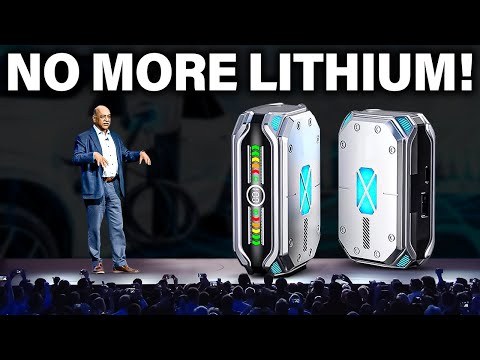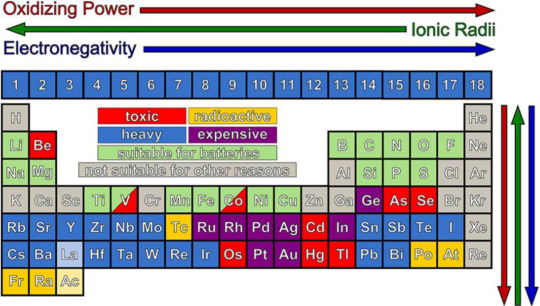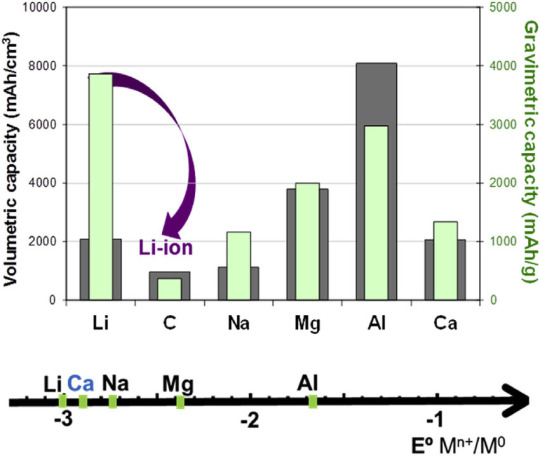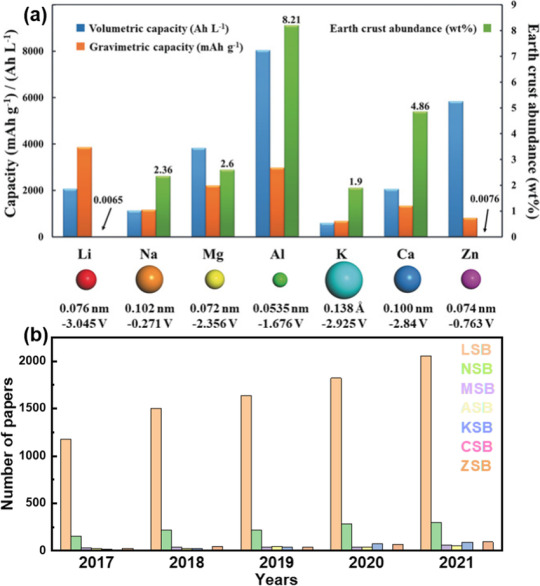#Sodium ion batteries
Photo

Heterostructured nanoflowers for high-performance sodium storage
A Chinese team has published new work on battery designs employing heterostructured nanoflowers in Energy Material Advances.
"Sodium-ion batteries (SIBs) have shown to be promising candidate to replace lithium-ion batteries (LIBs), because Na is considered ubiquitous on Earth," said paper author Jun Song Chen, with School of Materials and Energy, University of Electronic Science and Technology of China. "However, the larger atomic size of sodium than lithium results in retarded charge diffusion and severe volume change during sodium storage, thus deteriorating the cycling stability and rate performance of SIBs."
It is crucial to design unique electrode materials with enhanced electrochemical properties to address these drawbacks. Chen explained that transition metal sulfides are attractive for sodium storage among various anode materials. Besides, constructing heterostructures is also effective to enhance the electrochemical properties of active materials, which induces a strong internal electric field at the interface between two components, offering extra driving force for the ions and electrons transport at the boundary.
Read more.
#Materials Science#Science#Heterostructures#Nanotechnology#Sodium ion batteries#Sodium#Lithium ion batteries#Lithium#Sulfides#Nickel#Iron
9 notes
·
View notes
Text
Sodium ion Batteries
Exploring alternatives to lithium-ion batteries, sodium-ion batteries emerge as a promising contender. While offering potential advantages such as lower cost and abundance of sodium resources, they face challenges including lower energy density. Despite advancements, widespread adoption hinges on overcoming technical hurdles and scaling up production.
1 note
·
View note
Text
Green energy is in its heyday.
Renewable energy sources now account for 22% of the nation’s electricity, and solar has skyrocketed eight times over in the last decade. This spring in California, wind, water, and solar power energy sources exceeded expectations, accounting for an average of 61.5 percent of the state's electricity demand across 52 days.
But green energy has a lithium problem. Lithium batteries control more than 90% of the global grid battery storage market.
That’s not just cell phones, laptops, electric toothbrushes, and tools. Scooters, e-bikes, hybrids, and electric vehicles all rely on rechargeable lithium batteries to get going.
Fortunately, this past week, Natron Energy launched its first-ever commercial-scale production of sodium-ion batteries in the U.S.
“Sodium-ion batteries offer a unique alternative to lithium-ion, with higher power, faster recharge, longer lifecycle and a completely safe and stable chemistry,” said Colin Wessells — Natron Founder and Co-CEO — at the kick-off event in Michigan.
The new sodium-ion batteries charge and discharge at rates 10 times faster than lithium-ion, with an estimated lifespan of 50,000 cycles.
Wessells said that using sodium as a primary mineral alternative eliminates industry-wide issues of worker negligence, geopolitical disruption, and the “questionable environmental impacts” inextricably linked to lithium mining.
“The electrification of our economy is dependent on the development and production of new, innovative energy storage solutions,” Wessells said.
Why are sodium batteries a better alternative to lithium?
The birth and death cycle of lithium is shadowed in environmental destruction. The process of extracting lithium pollutes the water, air, and soil, and when it’s eventually discarded, the flammable batteries are prone to bursting into flames and burning out in landfills.
There’s also a human cost. Lithium-ion materials like cobalt and nickel are not only harder to source and procure, but their supply chains are also overwhelmingly attributed to hazardous working conditions and child labor law violations.
Sodium, on the other hand, is estimated to be 1,000 times more abundant in the earth’s crust than lithium.
“Unlike lithium, sodium can be produced from an abundant material: salt,” engineer Casey Crownhart wrote in the MIT Technology Review. “Because the raw ingredients are cheap and widely available, there’s potential for sodium-ion batteries to be significantly less expensive than their lithium-ion counterparts if more companies start making more of them.”
What will these batteries be used for?
Right now, Natron has its focus set on AI models and data storage centers, which consume hefty amounts of energy. In 2023, the MIT Technology Review reported that one AI model can emit more than 626,00 pounds of carbon dioxide equivalent.
“We expect our battery solutions will be used to power the explosive growth in data centers used for Artificial Intelligence,” said Wendell Brooks, co-CEO of Natron.
“With the start of commercial-scale production here in Michigan, we are well-positioned to capitalize on the growing demand for efficient, safe, and reliable battery energy storage.”
The fast-charging energy alternative also has limitless potential on a consumer level, and Natron is eying telecommunications and EV fast-charging once it begins servicing AI data storage centers in June.
On a larger scale, sodium-ion batteries could radically change the manufacturing and production sectors — from housing energy to lower electricity costs in warehouses, to charging backup stations and powering electric vehicles, trucks, forklifts, and so on.
“I founded Natron because we saw climate change as the defining problem of our time,” Wessells said. “We believe batteries have a role to play.”
-via GoodGoodGood, May 3, 2024
--
Note: I wanted to make sure this was legit (scientifically and in general), and I'm happy to report that it really is! x, x, x, x
#batteries#lithium#lithium ion batteries#lithium battery#sodium#clean energy#energy storage#electrochemistry#lithium mining#pollution#human rights#displacement#forced labor#child labor#mining#good news#hope
2K notes
·
View notes
Text
China plans Sodium-Ion battery Cars by end of 2023!!!
EV Revolution 2.0 – China plans Sodium Ion battery Cars by end of 2023
Continue reading Untitled

View On WordPress
#battery technology#catl sodium ion#catl sodium ion battery#goodbye lithium! new sodium ion 4.0 battery changes everything in 2023!#lithium ion battery#lithium ion vs sodium ion#lithium ion vs sodium ion battery#lithium vs sodium battery#pnnl sodium ion battery breakthrough#sodium battery#sodium ion#sodium ion batteries#sodium ion battery#sodium ion battery vs lithium ion#sodium ion battery working principle#tesla battery#tesla sodium ion 4.0
0 notes
Text
Swedish Company Says It's Made Huge Battery Breakthrough
3 notes
·
View notes
Text
12V 50Ah Car Sodium Ion Start-Stop Battery
The 12V 50Ah Car Sodium Ion Start-Stop Battery is engineered to deliver robust starting power for your vehicle, boasting dependable performance and high energy output.
Employing cutting-edge sodium-ion technology, this battery presents a superior alternative, ensuring stability and safety during start-stop operations.
With its substantial 50Ah capacity, this battery not only kick-starts your vehicle reliably but also reserves energy for other electronic components, providing an extended power supply.
Crafted with a compact design tailored to fit within the confined space of a vehicle, this battery maintains maximum efficiency without compromising on power delivery.
Prioritizing safety, this sodium-ion battery mitigates thermal risks, guaranteeing a secure and reliable start-stop functionality for your car.
By embracing sodium-ion technology, this battery underscores a commitment to sustainability, utilizing eco-friendly materials while delivering top-tier performance.
Versatility defines its application, catering to a diverse range of vehicles. The 12V 50Ah Car Sodium Ion Start-Stop Battery stands as a versatile power solution, meeting various automotive needs with its efficient and dependable energy supply.
2 notes
·
View notes
Link
Batteries manufactured by HiNa have an energy density of 145 Wh/kg and can endure 4,500 cycles. The next stage aims at 8,000 to 10,000 cycles and up to 200 Wh/kg energy density, according to the company(..)
CATL unveiled its own sodium-ion battery back in 2021 with an energy density of 160 Wh/kg and its next generation battery cell is supposed to exceed 200 Wh/kg. The company is planning to begin commercialization of its product from next year.BYD has more solid plans when it comes to its own sodium batteries, the company has been reported that it is to start manufacturing of the new sodium-ion cells in the second quarter of next year. Later the company went on to deny those reports(..)
#sodium-ion battery#HiNa#BYD#CATL#ev manufacturing#energy safety#energy storage#breaking news#China#affordable ev#demise of legacy automakers#demise of big oil#russian defeat
7 notes
·
View notes
Text
Sodium-ion batteries are rechargeable batteries which requires sodium-ion movement between electrodes during the charging and discharging of the battery and the cathode for these batteries is manufactured using sodium. These batteries are an effective form of energy storage, particularly for large-scale electric storage applications. The global sodium-ion battery market size was valued at USD 325.19 million in 2022.
0 notes
Text
Revolutionizing Energy Storage: KPIT Unveils Breakthrough Sodium-ion Battery Technology
In a groundbreaking announcement, KPIT, a global technology company, has revealed its latest innovation in the field of energy storage – a revolutionary Sodium-ion battery technology. This breakthrough holds immense promise in alleviating the global dependency on traditional lithium-ion batteries.
Unveiling the Future of Energy Storage
KPIT's Sodium-ion battery technology marks a significant stride towards a sustainable and greener future. The conventional lithium-ion batteries, while widely used, come with challenges related to resource scarcity and environmental impact. In contrast, Sodium-ion batteries present a compelling alternative, offering a more abundant and eco-friendly solution.
Overcoming Lithium Dependency
One of the primary advantages of KPIT's Sodium-ion battery is its reduced reliance on lithium. Lithium, a key component in traditional batteries, faces supply chain constraints and environmental concerns. The Sodium-ion technology not only addresses these issues but also opens up new possibilities for large-scale energy storage applications.
Key Features and Benefits
Abundant Resources: Sodium is abundantly available, making it a cost-effective and sustainable choice for mass production.
Environmental Impact: Sodium-ion batteries have a lower environmental impact compared to lithium-ion batteries, contributing to a cleaner and greener energy landscape.
Improved Safety: These batteries offer enhanced safety features, reducing the risk of overheating or fire incidents associated with traditional lithium-ion batteries.
Implications for the Future
KPIT's breakthrough is poised to revolutionize various industries, from electric vehicles to renewable energy storage. The potential for longer-lasting and more efficient energy solutions has far-reaching implications for a sustainable and clean energy future.
Conclusion
KPIT's unveiling of the Sodium-ion battery technology marks a significant milestone in the quest for sustainable energy solutions. By mitigating the dependency on lithium and offering a greener alternative, this innovation has the potential to reshape the landscape of energy storage technology. As we look towards a future driven by clean energy, KPIT's breakthrough paves the way for a more sustainable and environmentally conscious world.
0 notes
Text
Máme alternativu k lithium-iontovým bateriím?
V diskuzích k těžbě lithia se často objevují vědoucí komentáře: “Lithium je zbytečné, protože pokrok jde dál. Vždyť jsou k dispozici i články na bázi sodíku!” Jak to je doopravdy?
Nezbytné elektrochemické minimum
Abychom mohli na otázku v titulku odpovědět opravdu komplexně, je třeba úplně základní uvedení do elektrochemie: odpusťte mi to a přijměte to s trpělivostí, prosím.
Okřídlenou historku o italském lékaři Luigim Galvanim, kterému se cukala žabí stehýnka, pravděpodobně znáte. Galvani pohyb přisoudil živočišné elektřině; ve skutečnosti proud elektronů přecházel mezi zinkovými svorkami a měděným drátem. Zinek (jako neušlechtilý kov) se chtěl oxidovat (tedy: zbavit elektronů), měď naopak redukovat. Galvani to jen popsal, ale nerozuměl tomu; to se povedlo až mladému Alexandru Humboldtovi (tu scénu čtivě - až hororově - zachycuje v jedné kapitole románu Vyměřování světa Daniel Kehlmann, vřele doporučuji kliknout na odkaz). Zinek s mědí tvoří elektrody tzv. Daniellova článku, jeho napětí je asi 1,1 V a v návodech k pokusům pro mladší školní věk ho najdete obvykle pod názvem např. “ovocná baterie” (zapíchnete plíšek z mědi a zinku třeba do citronu a pociťte na jazyku ránu; o to ovoce pochopitelně vůbec nejde, citronová šťáva tam funguje jako elektrolyt).
Dnes říkáme, že zinek má nižší standardní redukční potenciál než měď. “Chemické nepřátelství kovů” - rozdíl v potenciálech - je napětí, které může průchod elektronů mezi oběma kovy (elektrodami) přinést. Lithium má z celé periodické tabulky standardní redukční potenciál úplně nejnižší, konkrétně -3,04 V. Račte se sami přesvědčit v tabulce. A teď už můžeme na baterie.
Požadavky na skvělou baterii
Budete-li vynalézat nový typ baterie, musíte při hledání kovů pro jeho elektrody vzít v úvahu následující podmínky:
Co nejnižší standardní redukční potenciál (aby baterie dávala slušné napětí, potřebujete nějaký málo ušlechtilý kov s hodně zápornou hodnotou potenciálu)
Co nejvyšší kapacita (obvykle vztažená vůči hmotnosti)
Netoxicita
Vysoký počet nabíjecích cyklů
Ekonomická, technologická a politická dostupnost (máme to kde získat? je tam stabilní režim?).
Podívejte se na tuhle tabulku (zdroj):

Tady je vidět, že ty nejlepší možnosti už jsme vyzkoušeli: Když pomineme toxické, drahé a těžké kovy, moc nám toho nezbývá. Z uvedených prvků má nejnižší standardní potenciál právě lithium.
Porovnáme-li lithium s jeho nejbližším příbuzným sodíkem na druhém grafu, vidíme, že jeho gravimetrická kapacita je asi 3x vyšší. Třetí graf (zdroj) ukazuje to stejné, přidává ale ekonomický a geografický aspekt: Zatímco zdroje lithia jsou rozmístěny nepravidelně a není jich mnoho, o sodíku (resp. sodných iontech) to neplatí.


Chceme-li tedy procházet jen potenciálně konkurenceschopné varianty, stačí prozkoumat jen několika málo případů.
“Dostatečně dobré” baterie
Otcem (prakticky ve všech významech toho slova) moderních baterií je John B. Goodenough (1922-2023), nositel řady ocenění, včetně Nobelovy ceny za chemii z roku 2019. Vedle mnoha jiných významných objevů má na svém kontě i lithium-iontové baterie. Z výše uvedeného je zřejmé, proč Goodehough sáhl právě po lithiu. V závěru života (v 94 letech!) publikoval objev nového typu článku, tzv. skleněné baterie. Mezitím se ale začaly objevovat baterie sodík-iontové. Pojďme se podívat na jednu po druhé.
Lithium-iontové baterie
Goodenough vymyslel několik baterií na bázi lithia. Nejčastěji se vyrábějí lithium polymerové baterie (elektrolytem je polymerní gel) s LiCoO katodou a grafitovou anodou, anebo s fosforečnanen lithno-železnatým LiFePO4, v elektromobilové branži označovaném jako LFP), případně s lithiem a oxidy manganu nebo LiNiMnCoO2. Kromě lithia takové baterie tedy obsahují i další kovy, jako je nikl, kobalt, nebo mangan.
Česká inovace
Baterie HE3DA je vynález Čecha Jana Procházky, se kterým se snaží prosadit někdy od roku 2010. Opět jde o Li-ion baterii, rozdíl je v konstrukci; to má přinést až dvojnásobnou hustotu skladované energie.
Baterie se od roku 2020 vyrábějí; podnik má ale podle průběžných mediálních zpráv problémy. Pro naši otázku (“Máme alternativu k Li-ion bateriím?”) je technologie HE3DA pořád je Li-ion baterií.
Sodík-iontové baterie
Zásadní inovací, o níž se hovoří, jsou Li-ionkám analogické sodík-iontové články. Hlavní výhodou je dostupnost sodíku, vyrobitelného třeba elektrolýzou chloridu sodného (kuchyňské soli). Nevýhodou má být nižší energetická hustota (tedy vyšší hmotnost baterie, kterou je třeba do elektromobilu/kola dát) a nižší počet nabíjecích cyklů, tedy nižší životnost. Oběma parametry Na-ion tedy proti Li-ion neobstojí. Pro stacionární ukládání elektřiny, kde nevadí vysoká hmotnost (třeba přebytky z domácí fotovoltaiky) by nový typ mohl být vhodný; u aut bude výhodnější Li-ion. V konkrétních číslech: Na-ion má dosahovat 160 Wh/kg, zatím Li-ion běžně dosahuje 200-300 Wh/kg; výše zmíněná HE3DA deklaruje cca dvojnásobek.
Technologie je relativně nová a málo vyzkoušená. Po internetu proto koluje řada informací, obvykle nadšených: Zejména čínská produkce hlásí nastupující boom a velké ambice ve věci odstranění výše zmíněných nedostatků. Za projekty stojí velké čínské automobilky, které jsou na dodávkách lithných surovin z Austrálie a Jižní Ameriky závislé a stejně jako Evropa hledají cestu k surovinové soběstačnosti. Jestli jsou výhledy na 70% cenu (někdy ale taky jen čtvrtinovou) a zároveň srovnatelné technické parametry reálné, zatím nelze posoudit. I v přejících textech se píše o neúplných dodavatelských řetězcích a problémech, které výrobu podle všeho potkají.
V Evropě se Na-ionkám v průmyslovém měřítku věnuje jen švédský Northvolt, v Kalifornii výrobu chystá Natron (více na webu firmy). Informaci, že čínský investor staví na Slovensku gigafactory k produkci sodík-iontových baterií, nelze ověřit. Z veřejných zdrojů vyplývá, že podnik bude vyrábět klasické Li-ion akumulátory.
Skleněné baterie
Posledním typem je tzv. skleněná baterie, za níž opět stojí John Goodeough. Její elektrody jsou opět z alkalického kovu (tedy, zase z lithia nebo sodíku), sklo má funkci elektrolytu. O efektivitě se vedou debaty; pro zodpovězení naší otázky ale stačí tvrzení, že se opět jedná o upravenou Na-ion, resp. Li-ion baterii.
Nenahraditelné lithium? Jak kde
Nelze vyloučit, že v budoucnu lidé vynaleznou zcela jiný typ baterie; s dosavadním poznáním to ale není pravděpodobné. Jak vidíme i na zmíněných inovacích, prakticky vždycky se jedná o konstrukční (HE3DA) nebo chemické (Na-ion) alternativy k Li-iontovým bateriím.
Sodík-iontové baterie si umím dobře představit pro domácí přebytky elektřiny z fotovoltaiky; vzhledem k nižšímu počtu nabíjecích cyklů ale bude ekologičtější i ekonomičtější vyrobenou elektřinu rovnou spotřebovat nebo prodat, například prostřednictvím smart-grids, komunitního sdílení elektřiny nebo jinak.
V automobilech (elektrokolech, koloběžkách ad.), kde každá zátěž navíc zvyšuje provozní náklady, je lithium špatně nahraditelné. Pokud chceme šetřit lithiem, ideální je, když budeme vyrábět méně aut (jak upozorňuje třeba Asociace pro mezinárodní otázky).
Výstižně to shrnuje predikce International Energy Agency, který do grafu zpracoval Jaroslav Kopřiva z AMO: Majorita poptávky po lithiu je způsobena očekávanou poptávkou po elektromobilech.
Bez lithia se tedy - při zachování dosaženého standardu a zároveň žádané dekarbonizaci ekonomiky - v dopravě neobejdeme. To ovšem není generální argument pro jeho těžbu za jakoukoli cenu.

Ke studiu:
HOUSECROFT, Catherine E. a SHARPE, A. G. Anorganická chemie. Přeložil David SEDMIDUBSKÝ, přeložil Ondřej BENEŠ, přeložil Karel HANDLÍŘ, přeložil Petr HOLZHAUSER, přeložil Irena HOSKOVCOVÁ, přeložil Jaroslava KALOUSOVÁ, přeložil Jan KOTEK, přeložil Václav SLOVÁK, přeložil Jarmila ŠPIRKOVÁ, přeložil Miroslav VLČEK. Praha: Vysoká škola chemicko-technologická v Praze, 2014. ISBN 978-80-7080-872-6.
0 notes
Photo

A new electrolyte that increases the stability of high-voltage sodium-ion batteries
In years to come, sodium-ion batteries (NIBs) could potentially be a great alternative to current energy storage systems. Despite their advantages, including the abundance of sodium and a potentially long cycle life, these sodium-based batteries are often less stable than lithium-based batteries, due to the instability of the solid-electrolyte interphase (SEI), a passivation layer that forms on electrode surfaces after repeated battery operation cycles.
Past studies have showed that in NIBs with a high voltage cathode, the SEI dissolves more rapidly than that in lithium-ion batteries (LIBs). This causes a series of side reactions, as well as the rapid depletion of the electrolyte and an irreversible loss of capacity, dramatically decreasing the stability and performance of NIBs.
Researchers at the Pacific Northwest National Laboratory have recently developed a new electrolyte that lowers the solvation ability of the SEI on the anode of NIBs batteries, while also forming a stable protective layer to protect the cathode. This electrolyte, introduced in a paper published in Nature Energy, could enable the development of high-voltage sodium-ion batteries that are both stable and reliable.
Read more.
13 notes
·
View notes
Text
#Sodium Ion Battery Market#Sodium Ion Battery Market Report#Sodium Ion Battery Market Trends#Sodium Ion Battery Market Growth#Sodium Ion Battery Market Research#Sodium Ion Battery Market Research Report
0 notes
Text
Sodium ions de-intercalate from the cathode and move to the anode when the battery is charged. Sodium ion batteries offer high electrochemical quality in terms of charge-discharge, reversibility, and specific discharge capacity. These batteries are now being used in electric automobiles. A sodium ion (Si-ion) battery is a great replacement for a lithium-ion (Li-ion) battery. Li-ion battery materials cost higher than sodium ion battery materials. Sodium ion batteries are gaining appeal as an alternative energy storage solution for automobiles, aircraft, and marine applications, among others. Sodium ion batteries are in high demand due to their easy availability and accessibility. These batteries are appropriate for situations where compactness is secondary. Energy is stored in the form of chemical bonds at the anode.
0 notes
Text
Sodium-Ion Battery Market Size, Share and Global Trend By Technology (Sodium Sulfur Battery, Sodium Salt Battery, Sodium Air Battery), By End-Use (Residential, Utility, Commercial, Industrial, Transport Sector) and Geography Forecast till 2022-2029
0 notes
Text
Sodium-Ion Battery Market Size, Share and Global Trend By Technology (Sodium Sulfur Battery, Sodium Salt Battery, Sodium Air Battery), By End-Use (Residential, Utility, Commercial, Industrial, Transport Sector) and Geography Forecast till 2022-2029
0 notes